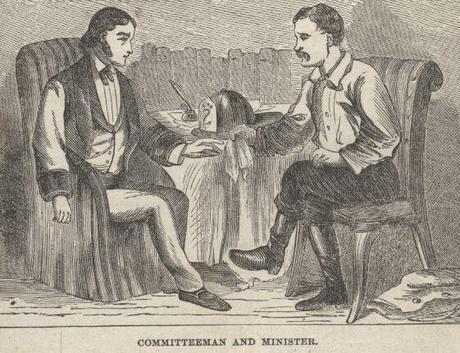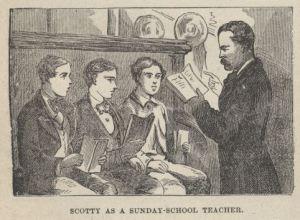Jan McIntire-Strasburg, Executive Director–American Humor Studies Asociation
Humorist employ many different stylistic techniques in order to incite thought-provoking laughter in their readers. Once such is Mikhail Bahktin’s concept of heteroglossia. As Bahktin used it, this term refers to a linguistic play of different forms of a language from different races, classes or genders that highlights difference. While such use does not always result in humor, it is an excellent way to do so. Juxtaposing the dialects representing upper and lower classes, for example, can result in humorous misunderstandings that highlight the differences between the two classes in education or experience, and demonstrate the difficulties of effective communication between the two. The elements of contradiction and surprise that result from such conversations often invoke laughter.
Mark Twain makes excellent use of this linguistic play in “Buck Fanshaw’s Funeral,” a short sketch in his travel book, Roughing It. Miner Scotty Briggs’ Washoe slang and poker analogies are incomprehensible to the Eastern minister he is trying to convince to officiate at Buck’s funeral. The minister, in his attempts to understand Briggs’ request are equally confusing to the miner. The minister’s “clarifications” are long-winded and employ theological vocabulary well outside of Scotty’s experience. Thus for the space of several pages, the reader is treated to the experience of watching (hearing) two men groping toward an understanding of each other. Since the reader already knows what is required, she is free to enjoy laughter at the expense of both the formal, highly educated minister and the slangy Western miner.

Such laughter can, and often does, result in humor for entertainment purposes only. But in Twain’s case, the laughter engendered by Scotty and the minister also highlights major differences in Eastern and Western life in nineteenth century and the clash of two cultures within American borders. He demonstrates through the dialog a wide gulf in value systems and invites the reader to take a side—should we favor the minister who, though well educated, comes off as stuffy and superior, or should we instead value Scotty’s more homey and practical view of life on the frontier?

These insights are all available to us as we read Twain’s sketch, and because regional dialects comprised a large part of nineteenth century writing, Twain’s contemporaneous readers would have had no trouble discerning the meaning or recognizing the humor. However, contemporary readers, unused to the idiosyncratic spellings and pronunciations often find this kind of reading slow going, and the “translation” that must take place can affect how readers interpret the humor of the sketch. The sound recording below, because it offers the opportunity to hear rather than see the dialect, allows for a 21st century “reader” to avoid the difficulties of reading through the dialect, and lets the humor come through. Thus it frees the reader to think about what is said instead of spending time deciphering the text itself. For students who are inexperienced readers of dialect, this freedom is necessary to understanding. For experienced readers of Twain and dialect, hearing the text enhances the fun of it.
Sound recordings can make excellent teaching tools to demonstrate the concept of heteroglossia by showing them how it works in practice instead of telling them how it works. This recording of “Buck Fanshaw’s Funeral” is one example of how we can use sound to enhance teaching humor to undergraduates. It is also a great way for Twainiacs and humor scholars to entertain themselves.
See also an audio recording of the piece from Harry E. Humphrey in 1913.
The American Humor Studies Association welcomes teaching resources for their website. Please contact us at [email protected]
